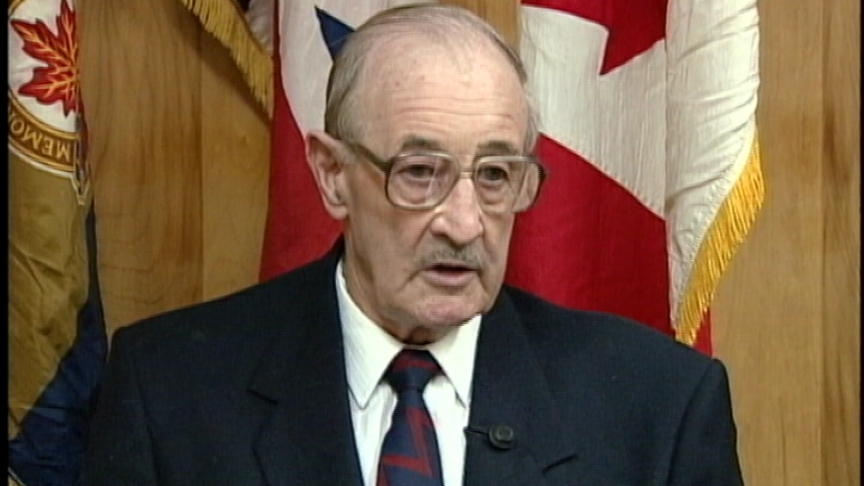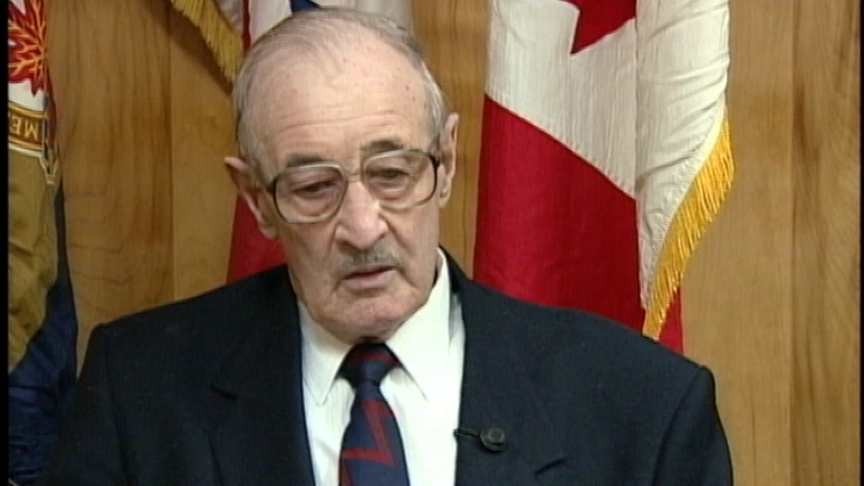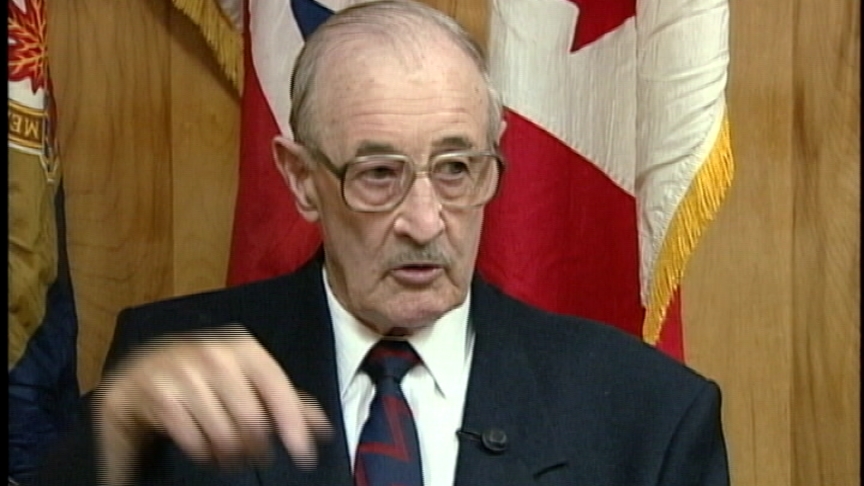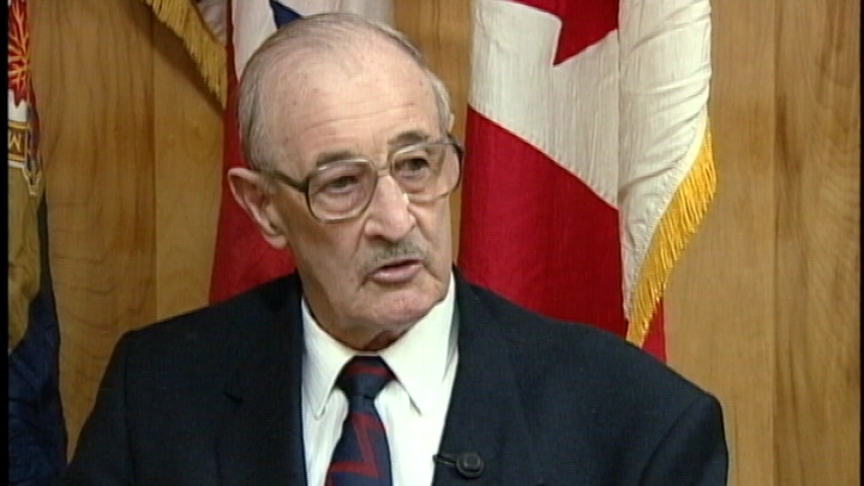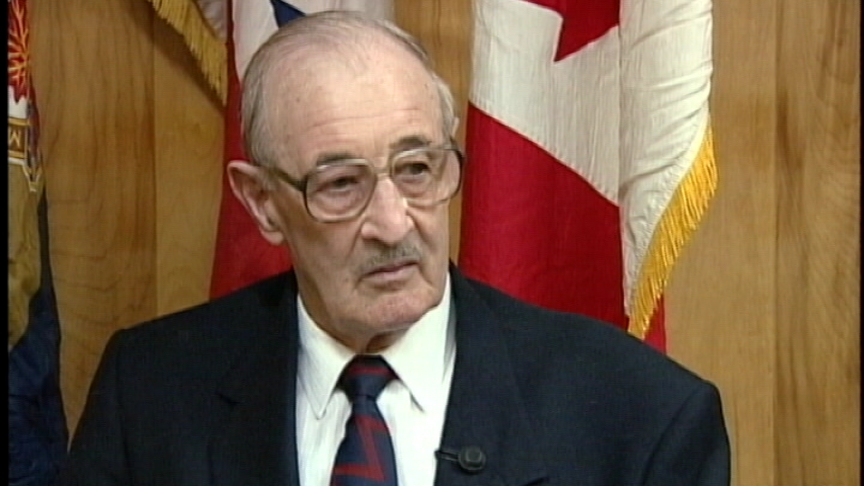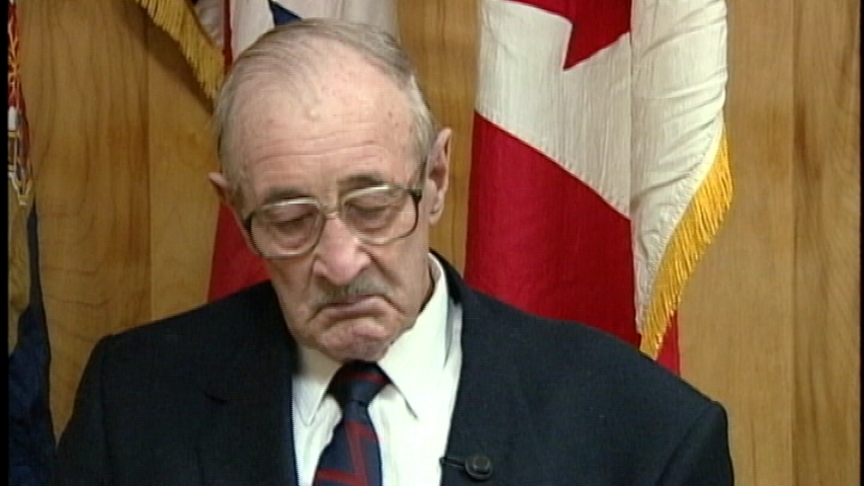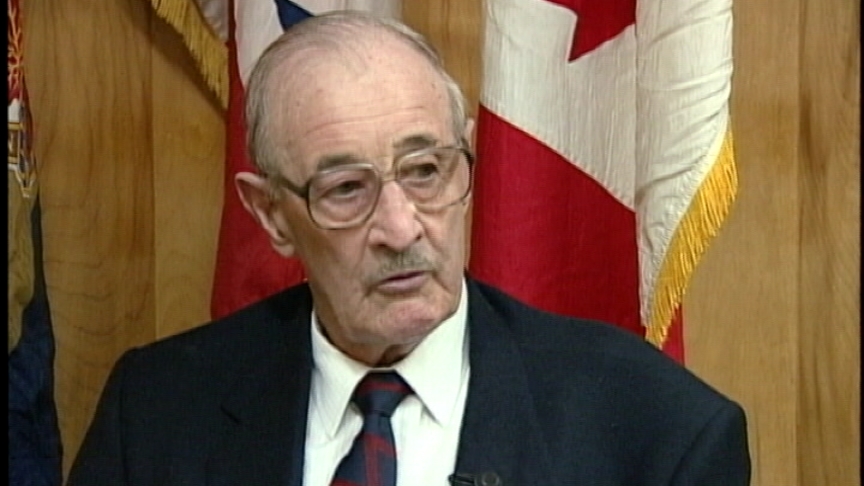Interviewer: 3rd Division moved up,
passing through south of Caen...
Yeah
Interviewer: ...to the Orne River.Yeah,
Well, before that, they were bombing
at Hautmesnil Quarry
Interviewer: Okay, tell me about that.
Well, we were moved up, we were in
different positions along there.
We moved up on the 14th of, the day before the
14th of August and the quarry was there.
I know, I've seen it since.
It's on the right hand side of the road and
our battery was put right in front of the quarry.
One battery, I don't know which now,
was in behind, right in behind the quarry and
our other battery was in a field in front of us.
The command post, our battery command post,
was down in the side of the quarry where
there's kind of a building.
And a railroad track came along through
the front of the quarry and through what
you would call a “shell of a building”.
Walls this wide. And all it was a
support braces across to carry loads
of aggregate from the quarry and
dump it in the railroad cars.
This is like a big open building.
So, I had set my sleeping quarters up half way
down one of these things, wide open at the top.
And I was on the switchboard and around noon,
I came off and I'm standing out there and
they were bombing at the high ground,
I forget the name of the ridge in front
down there, the first bunch of bombers hit that,
and I'm standing out there outside leaning
on this entranceway of this building I was at
and watching the bombers come over and
just then a Bren gun carrier from the
1st Hussars came in and went down to see
one of our officers and when the
air planes almost got over our head,
I looked up and the goddamn
bomb bay doors opened.
I know one thing I dived back in,
and the walls were this thick,
and I was right back in the corner.
All I had on was my, no helmet, no nothing.
We were there for 70 minutes,
steady bombing.
You couldn't see, hear, nothing.
It just stunk. And I understand there was
different ways to try and stop them from
dropping it, but we had it for 70 minutes.
And finally when the smoke cleared,
the Bren gun carrier driver,
I guess when the bombing started,
he jumped under his carrier and
I looked over there, the carrier was there
but he was laying across the tracks and
the carrier was laying on top of him.
And oh, what a mess. That time we lost,
there was 13, 15 killed and 60-some wounded.
Our battery lost every vehicle that
would run except the jeep.
Our other battery suffered,
they took a lot of our people to,
and then we had to clean up.
I don't know if you know this part or not
but the jeep was there so Padre asked
me to drive the jeep and the shells were
exploding in the trailers, they're burning.
He said, “Well let's go, we gotta go down to the
quarry.” So he had a bunch of blankets and
what it was, our wagon lines were
down in the quarry. German shells could
never hit ‘em, but air planes
coming this way nailed ‘em.
We had seven trucks down there and
we went down there and our job was
to find what we could find that was left.
There was seven burnt-out vehicles all
blown to bits, and he layed seven blankets out.
We knew there should be seven people there.
We got through picking pieces off the bottom
of the trucks, we found enough pieces
to represent six men.
We never did find anything, we found a head
and an arm, pair of legs, pair of feet,
and a head and everything was burnt.
And the one man that we never found,
we did find his jacket. His name is in our book.
He's classed in as missing in action
because we found no evidence.
We got them all packed up in a,
rolled up and we took them up
near the top and buried them.
It's one thing that, not a very pretty sight.



